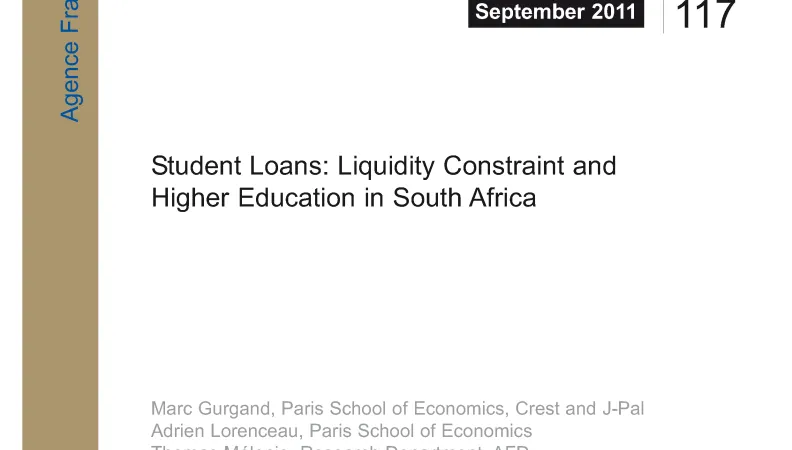Share the page
Student Loans: Liquidity Constraint and Higher Education in South Africa
Published on

Although primary education is almost universal in South Africa, and secondary schooling has very wide outreach, higher education has become a severe problem in this emerging country. Enrollment stands at about 15%, a low figure for a country at this level of development. The black and colored population and, generally, the poor are those that have the most limited access to education. Wage returns to university degrees are, at the same time, high. This raises both efficiency and equity considerations that stand high on the political agenda.
Empirical evidence that access to higher education is constrained by credit availability is limited and usually indirect. This paper provides direct evidence by comparing university enrollment rates of potential South African students, depending on whether or not they get a loan to cover their university fees, in a context where such fees are high. The authors use matched individual data from a credit institution (Eduloan) and from the Department of Education. Using a regression-discontinuity design based on the fact that loans are granted according to a credit score threshold, they can estimate the causal impact of loan obtainment.
The authors find that the credit constraint is substantial, as it reduces the enrollment rate into higher education by more than 20 percentage points in a population of student loan applicants.
Useful Information
-
Authors
-
Adrein LORENCEAU, Marc GURGAND, Thomas MELONIO
-
Edition
-
117
-
Page number
-
48
-
ISSN
-
1958-539X
-
Collection
-
Working Paper
